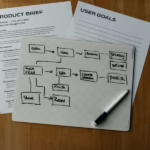With effective strategies at your disposal, you can pay off debt faster and enhance your savings. Managing debt can feel overwhelming, but taking proactive steps will empower you to regain financial control. In this blog post, you’ll discover innovative approaches and practical tips that you can implement today to accelerate your debt repayment and maximize your savings potential. Let’s explore how you can take charge of your finances and build a more secure financial future.
Reframing Your Relationship with Debt
Adopting a fresh perspective on debt can significantly alter your financial journey. Rather than viewing debt solely as a burden, consider it a tool that can enhance your understanding of money management. This shift in mindset allows you to approach repayments with strategic planning while being more proactive in finding solutions that align with your financial goals.
Debt often creates a heavy mental load, leading to anxiety and stress that can affect various aspects of your life. The constant worry about bills and obligations can overshadow your decision-making and overall well-being. Recognizing the emotional toll of debt enables you to address the feelings associated with it and empowers you to take action toward becoming debt-free.
Seeing debt as a motivator can help drive you toward achieving your financial objectives. Instead of viewing your debt as a daunting obstacle, leverage it as a catalyst for change. Create a structured plan that highlights the steps you need to take, and celebrate small victories along the way. This approach not only boosts your confidence but also reinforces your commitment to becoming financially secure.
Smart Strategies for Accelerating Debt Repayment
Developing a plan to pay off your debt faster involves employing effective strategies that align with your financial goals. By utilizing particular repayment methods and establishing a realistic schedule, you can redirect your focus and harness your resources towards overcoming your debt burden.
Choosing between the debt avalanche and debt snowball methods can significantly affect your repayment journey. The debt avalanche method focuses on paying off high-interest debt first, saving you money on interest over time. Alternatively, the debt snowball method targets your smallest debts first, providing quick wins and a psychological boost, which can encourage you to stay motivated in your repayment efforts.
A practical repayment plan outlines a clear path toward debt freedom tailored to your finances. Begin by analyzing your total debt, minimum payments, and interest rates. Next, allocate extra funds to your debt, whether through trimming expenses or increasing income. Create a monthly budget that allows for consistent payments while maintaining essential living expenses.
To create an effective repayment plan, list all your debts along with their balances, interest rates, and minimum monthly payments. Choose a method—avalanche or snowball—that resonates with your motivation style. Factor in your monthly income and fixed expenses to determine how much you can realistically allocate for debt repayment.

Harnessing the Power of Financial Tools
Financial tools can streamline your debt repayment process and enhance your savings efforts. By leveraging technology, you can take advantage of resources designed to create personalized budgets, track spending, and provide insights into your financial habits.
Debt management apps can be game-changers in your financial journey. By organizing your debts in one place, these tools provide a clear picture of what you owe and help you create actionable repayment plans. Many apps even offer reminders for due dates, tips for reducing expenses, and insights into your spending patterns.
Consolidation and refinancing can be effective strategies for simplifying your debt. These processes involve combining multiple debts into a single payment or securing a loan with better terms to reduce interest rates. For example, if you have high-interest credit card debt, consolidating it into a lower-interest personal loan can save you money in the long run.
Creating a Savings Fortress While Paying Debts
Simultaneously building a savings fortress while tackling debt may seem contradictory, yet it’s entirely feasible with the right strategy. Balancing both goals requires a meticulous approach where you allocate funds toward savings each month, even if it’s a small amount.
Mastering a budget that accommodates both debt repayment and savings is important for financial health. Start by tracking your income and expenses, then assign specific portions of your monthly earnings to each category. Utilize budgeting apps or spreadsheets to provide clarity on spending habits, ensuring you’re allocating adequate funds toward paying off obligations while also progressing your savings goals.
A well-stocked emergency fund acts as your safety net, protecting you against unexpected expenses that could derail your debt repayment plan. Having three to six months’ worth of living expenses saved can prevent you from resorting to credit cards or loans when life throws a curveball like job loss or medical bills.
Seeking Professional Guidance and Support
Engaging with professionals can offer tailored strategies that align closely with your financial goals. Whether you seek one-on-one consultations or group workshops, experts can provide insights and tools necessary to navigate debt repayment effectively.
Financial advisors specialize in analyzing your financial situation, identifying weaknesses in your spending habits, and creating personalized plans for debt repayment. They can propose strategies such as debt consolidation or tailored payment plans to help reduce interest costs.
Support groups and community resources can be invaluable as you navigate your debt repayment journey. These local organizations or online communities not only offer accountability and shared experiences but also provide access to workshops and educational resources. Engaging with others facing similar challenges can boost your motivation and help you develop practical skills for managing your finances effectively.
Conclusion
Following this guide, you can adopt smart strategies to pay off debt faster and increase your savings. By prioritizing high-interest debts, creating a budget, and exploring consolidation options, you not only take control of your finances but also free up resources to save for future goals. With commitment and the right approach, you can achieve financial freedom while building a stable savings foundation for yourself.



